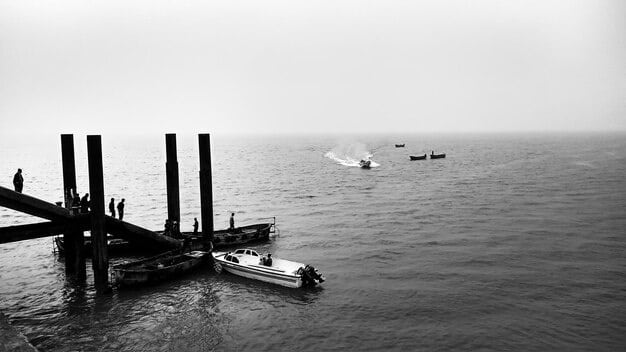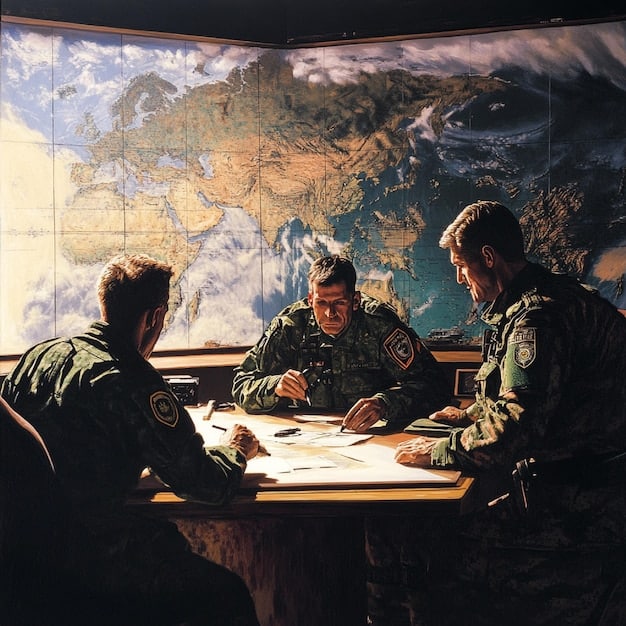Pearl Harbor: Unveiling the Intelligence Failures

Pearl Harbor was not just a surprise attack; it was a consequence of critical intelligence failures including misinterpretations of intercepted messages, bureaucratic miscommunication, and a general underestimation of Japan’s capabilities and intentions.
The attack on Pearl Harbor on December 7, 1941, remains a pivotal moment in American history. While the surprise attack is well-known, the underlying intelligence failures that allowed it to occur are often less understood. This article delves into the series of missteps, misinterpretations, and systemic issues that contributed to the disaster, exploring how a combination of factors led to one of the most devastating intelligence failures in US history.
Early Warnings and Misinterpretations
Leading up to December 7, 1941, there were several pieces of intelligence that, in hindsight, should have raised significant alarms. However, these warnings were either misinterpreted, dismissed, or not adequately communicated to the commanders at Pearl Harbor. This section explores some of the key pieces of intelligence and the reasons behind their misinterpretation.
Intercepted Japanese Communications
The US had broken some of Japan’s diplomatic codes, allowing them to intercept and read Japanese communications. These intercepts, known as “Magic” intercepts, revealed increasingly aggressive Japanese intentions. However, the focus was primarily on Japanese activities in Southeast Asia, leading to a neglect of potential threats to Pearl Harbor.
Failure to Connect the Dots
Despite having access to these intercepts, intelligence analysts failed to connect the dots and recognize the imminent danger to Pearl Harbor. The information was fragmented, and there was a lack of coordination among different intelligence agencies. The significance of certain messages was downplayed or overlooked entirely.
- Underestimation of Japanese Capabilities: The prevailing belief was that Japan lacked the capability to launch a large-scale attack on Pearl Harbor.
- Focus on Southeast Asia: Intelligence efforts were primarily directed towards monitoring Japanese activities in Southeast Asia, diverting attention from Hawaii.
- Lack of Communication: There was inadequate communication between intelligence agencies in Washington D.C. and the commanders at Pearl Harbor.

In essence, the early warnings were present, but a combination of misinterpretation, underestimation, and lack of communication prevented them from being acted upon effectively. This failure set the stage for the disaster that would follow.
The “Magic” Intercepts and Their Significance
The “Magic” intercepts represented a crucial source of intelligence, providing insights into Japan’s diplomatic and military strategies. However, the way these intercepts were handled, analyzed, and disseminated played a significant role in the intelligence failures surrounding Pearl Harbor. This section examines the content of these intercepts and their ultimate impact.
Decryption and Analysis
The US had successfully decrypted key Japanese codes, allowing them to read messages related to diplomatic negotiations, military movements, and strategic planning. These intercepts contained vital information that, if properly analyzed, could have provided a clear warning of the impending attack.
The “Winds” Message
One of the most significant intercepts was the anticipated “winds” message, which would signal the breakdown of diplomatic negotiations and the commencement of hostilities. While the US was aware of this potential message, it was never definitively received or acted upon, contributing to the overall state of unpreparedness.
- Missed Opportunities: The failure to recognize and act on the “winds” message represented a critical missed opportunity.
- Information Overload: The sheer volume of intercepted messages may have overwhelmed analysts, making it difficult to identify the most critical pieces of information.
- Bureaucratic Delays: Delays in disseminating the intercepts to key decision-makers further hampered the response.
The “Magic” intercepts, while providing valuable intelligence, were ultimately mishandled, leading to a failure to recognize the imminent threat to Pearl Harbor. This failure underscores the importance of effective intelligence analysis and dissemination.
Underestimation of Japanese Capabilities
A significant factor contributing to the intelligence breakdown was the pervasive underestimation of Japan’s military capabilities and strategic intentions. This underestimation led to a complacency that blinded intelligence analysts and military commanders to the possibility of a surprise attack on Pearl Harbor. This section explores the roots and consequences of this underestimation.
Prevailing Attitudes
Many in the US military and government held a condescending view of Japan’s military prowess, believing that they were not capable of launching a sophisticated attack against a major US naval base. This view was reinforced by racial prejudices and a general lack of understanding of Japanese culture and strategic thinking.
Ignoring Evidence
Despite evidence to the contrary, such as Japan’s successful surprise attack on the Russian fleet at Port Arthur in 1904, the prevalent view remained that Japan was not a serious threat. This cognitive bias led to the dismissal of intelligence suggesting a potential attack on Pearl Harbor.
- Racial Bias: Prejudices against the Japanese contributed to the underestimation of their abilities.
- Complacency: A sense of invulnerability led to a lack of vigilance and preparedness.
- Historical Parallels Ignored: The lessons of past Japanese surprise attacks were not heeded.

The underestimation of Japanese capabilities was a critical error that fueled the intelligence failures leading to the attack on Pearl Harbor. This misjudgment highlights the dangers of complacency and the importance of objective intelligence assessment.
Bureaucratic Miscommunication and Turf Wars
The intelligence failures at Pearl Harbor were exacerbated by bureaucratic miscommunication and inter-agency rivalries that hindered the effective sharing of critical information. These systemic issues created barriers to intelligence dissemination and contributed to the overall state of unpreparedness. This section examines the nature and impact of these bureaucratic challenges.
Lack of Coordination
Different intelligence agencies, including the Navy, Army, and State Department, operated independently with limited coordination and information sharing. This lack of collaboration resulted in fragmented intelligence and a failure to connect the dots between different pieces of information.
Turf Battles
Rivalries between agencies and individuals often led to a reluctance to share information, as each sought to protect its own turf and maintain its position of authority. This competitive environment undermined the collective effort to gather and analyze intelligence effectively.
- Duplication of Effort: Agencies often duplicated each other’s work, leading to inefficiencies and wasted resources.
- Information Silos: Critical information was often trapped within individual agencies, preventing a comprehensive understanding of the threat.
- Lack of Accountability: The absence of clear lines of authority and responsibility made it difficult to hold individuals accountable for intelligence failures.
Bureaucratic miscommunication and turf wars significantly hampered the US intelligence efforts leading up to Pearl Harbor. These systemic issues underscore the importance of effective inter-agency coordination and a culture of information sharing.
The Role of Technology and Signal Intelligence
Technological advancements in signal intelligence played a crucial role in gathering information about Japan’s intentions. However, the effective use of this technology was limited by a range of factors, including a shortage of skilled personnel and a failure to prioritize resources towards signal intelligence. This section explores the role of technology and signal intelligence in the lead-up to Pearl Harbor.
Intercepting Signals
The US had invested in technology to intercept and decode Japanese radio communications, providing access to valuable information about their military and diplomatic activities. However, the volume of intercepted signals often overwhelmed the available resources, making it difficult to identify the most critical messages.
Limitations of Technology
While technology provided a means to gather intelligence, it was not a substitute for human analysis and judgment. The interpretation of intercepted signals required skilled analysts who could understand the context and significance of the information. Unfortunately, there was a shortage of such personnel.
- Resource Constraints: Limited resources were allocated to signal intelligence, hindering its effectiveness.
- Personnel Shortages: There was a lack of trained analysts to process and interpret the intercepted signals.
- Technological Limitations: The technology itself had limitations, making it difficult to decode certain types of messages.
Technology and signal intelligence played a significant role in the lead-up to Pearl Harbor, but their effectiveness was limited by resource constraints, personnel shortages, and the inherent limitations of the technology itself. This illustrates the need for a holistic approach to intelligence gathering that combines technological capabilities with human expertise.
Lessons Learned and Reforms Implemented
The devastating attack on Pearl Harbor prompted a thorough review of US intelligence practices and led to significant reforms aimed at preventing similar failures in the future. These reforms addressed issues related to inter-agency coordination, intelligence analysis, and resource allocation. This section outlines the key lessons learned from Pearl Harbor and the reforms that were subsequently implemented.
Creation of the Central Intelligence Agency (CIA)
One of the most significant reforms was the creation of the Central Intelligence Agency (CIA) in 1947. The CIA was established to centralize intelligence gathering and analysis, improve inter-agency coordination, and provide policymakers with a comprehensive understanding of global threats.
Improved Inter-Agency Coordination
Efforts were made to improve communication and collaboration between different intelligence agencies, reducing the risk of information silos and duplication of effort. These efforts included the establishment of joint intelligence committees and the implementation of standardized intelligence protocols.
- Enhanced Training: Training programs were developed to improve the skills and expertise of intelligence analysts.
- Increased Resources: Additional resources were allocated to intelligence gathering and analysis.
- Oversight Mechanisms: Oversight mechanisms were put in place to ensure accountability and prevent abuses of power.
The lessons learned from Pearl Harbor led to significant reforms in US intelligence practices, aimed at improving inter-agency coordination, enhancing intelligence analysis, and ensuring accountability. These reforms have played a crucial role in strengthening US national security in the decades since.
| Key Point | Brief Description |
|---|---|
| ⚠️ Early Warnings | Misinterpreted signals and lack of action. |
| 🇯🇵 Underestimation | Japan’s capabilities were underestimated. |
| 🗣️ Miscommunication | Poor coordination hindered intelligence sharing. |
| 📡 Tech Limitations | Technology’s potential was limited. |
FAQ
▼
The primary failure was the inability to connect various pieces of intelligence, such as intercepted messages and Japanese naval movements, to recognize the imminent threat to Pearl Harbor.
▼
Despite providing valuable insights, the “Magic” intercepts were mishandled and misinterpreted, failing to trigger necessary warnings due to delays and analytical errors in interpreting them.
▼
Prevailing racial biases and a lack of understanding of Japanese military strategy led to a significant underestimation of Japan’s ability to launch a successful attack.
▼
Bureaucratic miscommunication and inter-agency rivalries caused fragmented intelligence and hindered effective information sharing, exacerbating the intelligence failures that led to the attack.
▼
Key reforms included the creation of the CIA to centralize intelligence and improved coordination among agencies to streamline information sharing processes and analysis efforts.
Conclusion
The attack on Pearl Harbor was a tragic event resulting from a complex web of intelligence failures. The misinterpretation of warnings, underestimation of Japanese capabilities, bureaucratic miscommunication, and limitations in the use of technology all contributed to the disaster. By understanding these failures and implementing necessary reforms, the US aimed to prevent similar tragedies and strengthen its national security, establishing protocols refined over decades.





